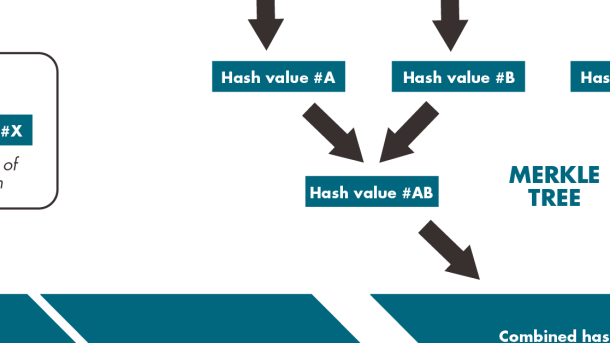Welcome to the world of Hyperledger Fabric, where innovation and efficiency converge to revolutionize blockchain technology. In this comprehensive tutorial guide, we will dive deep into the intricacies of Hyperledger Fabric, unraveling its potential and equipping you with the knowledge to navigate this transformative platform with confidence. Join us on this exciting journey as we unlock the secrets of Hyperledger Fabric and empower you to harness its power to reshape industries.
Introduction to Hyperledger Fabric
At its core, Hyperledger Fabric is a permissioned blockchain framework that allows multiple organizations to collaborate on a shared network. It provides a flexible and modular architecture that can be tailored to meet specific business requirements. By leveraging Hyperledger Fabric, organizations can securely and efficiently exchange data and execute transactions in a decentralized and transparent manner.
One of the key concepts in Hyperledger Fabric is the notion of a network. A network consists of multiple nodes, which are essentially the participants in the network. Each node can be a client, peer, or orderer. The clients interact with the network through APIs, while the peers maintain the ledger and execute transactions. The orderers ensure that transactions are properly ordered and agreed upon.
Hyperledger Fabric also utilizes Apache CouchDB as its underlying database. This provides a scalable and reliable storage solution for the ledger data. Additionally, Fabric supports the use of smart contracts, also known as chaincode, which are executed on the network to enforce the business logic.
To get started with Hyperledger Fabric, you will need to set up a development environment. This typically involves installing the necessary software development kit (SDK) and configuring the network. Once your environment is set up, you can begin writing and deploying your own smart contracts, or interact with existing contracts on the network.
In this tutorial, we will walk you through the process of setting up a Hyperledger Fabric network, deploying smart contracts, and interacting with the network using various tools and APIs. Whether you are a developer or a business professional, this tutorial will equip you with the knowledge and skills to leverage Hyperledger Fabric in your own projects.
So let’s dive in and start exploring the world of Hyperledger Fabric!
Key Features and Design of Hyperledger Fabric
Hyperledger Fabric is a highly flexible and scalable blockchain framework that is specifically designed for enterprise use. It offers a range of key features that make it a preferred choice for businesses looking to implement blockchain solutions.
One of the main features of Hyperledger Fabric is its modular architecture. It allows for the customization of various components, such as consensus algorithms, membership services, and smart contract execution engines. This modular approach ensures that the framework can be tailored to meet specific business requirements and allows for easy integration with existing systems and processes.
Another important feature of Hyperledger Fabric is its support for private and permissioned networks. This means that only authorized parties can participate in the network and access the shared ledger. This feature is crucial for businesses that need to ensure data privacy and regulatory compliance.
Hyperledger Fabric also provides a high level of performance and scalability. It utilizes a unique consensus mechanism called Practical Byzantine Fault Tolerance (PBFT), which allows for fast and efficient transaction processing. Additionally, Fabric supports parallel transaction execution, which enables multiple transactions to be processed simultaneously, further enhancing its scalability.
The design of Hyperledger Fabric is centered around the concept of channels. Channels allow for the creation of private sub-networks within a larger network, enabling different parties to have their own independent transactions and smart contracts. This design feature is particularly useful for businesses with complex relationships and privacy requirements.
In terms of technology, Hyperledger Fabric is built using a distributed ledger technology stack. It utilizes a combination of peer-to-peer communication, cryptographic algorithms, and consensus mechanisms to ensure the integrity, security, and immutability of the shared ledger.
Getting Started with Hyperledger Fabric: Your First Project
In this section, we will guide you through your first project with Hyperledger Fabric. Before we dive in, make sure you have completed the necessary Linux training to ensure a smooth experience.
To get started, you need to understand the basic concepts of Hyperledger Fabric. It is a permissioned blockchain framework that allows multiple organizations to collaborate on developing and operating a decentralized network. Each organization is represented by a node in the network.
Your first project will involve creating a simple application that interacts with the Hyperledger Fabric network. You will need to set up the necessary infrastructure, including installing Hyperledger Fabric and its dependencies. These dependencies include Apache CouchDB, which is used for storing the blockchain ledger.
Once your infrastructure is in place, you will define the network structure by creating channels and adding organizations and their respective nodes. This step is crucial for establishing the trust and permissions within the network.
Next, you will write and deploy a smart contract, also known as a chaincode, to the network. The smart contract defines the rules and logic for executing transactions within the network. This is where the real power of Hyperledger Fabric comes into play, as it allows for complex business logic to be executed in a secure and decentralized manner.
Finally, you will develop a client application that interacts with the network using the Hyperledger Fabric software development kit (SDK). This application will allow users to interact with the smart contract and perform actions on the network, such as querying data or submitting transactions.
Throughout this tutorial guide, we will provide step-by-step instructions and code examples to help you navigate through each stage of the project. By the end, you will have a solid understanding of how to build and deploy applications on the Hyperledger Fabric platform.
So let’s get started on your journey to becoming a Hyperledger Fabric developer and unlock the potential of blockchain technology in your projects.


